India’s manufacturing landscape is a dynamic and rapidly evolving sector, playing a pivotal role in the nation’s economic growth. Bolstered by government initiatives like the ‘Make in India’ campaign, the manufacturing industry is witnessing substantial investments and technological advancements.
The manufacturing sector is a cornerstone of India’s economy, contributing approximately 16-17% to the national GDP and providing employment to millions across the country. Its importance is underscored by the sector’s role in driving economic diversification, fostering innovation, and boosting exports. Over the past decade, the manufacturing industry has experienced robust growth, fuelled by government policies, foreign direct investments, and advancements in technology.
Initiatives like ‘Make in India‘ and the Production Linked Incentive (PLI) schemes have been instrumental in creating a conducive environment for manufacturing, encouraging both domestic and international companies to establish and expand their operations in India.
Steps to Setup a Manufacturing Plant in India:
- Market Research and Planning
- Business Planning
- Legal and Regulatory Compliance
- Site Selection
- Construction and Infrastructure
- Equipment Procurement
- Hiring and Training
- Supply Chain Management
- Marketing and Distribution Strategies
Key Aspects to Setting Up a Manufacturing Plant in India:
Market Research and Planning
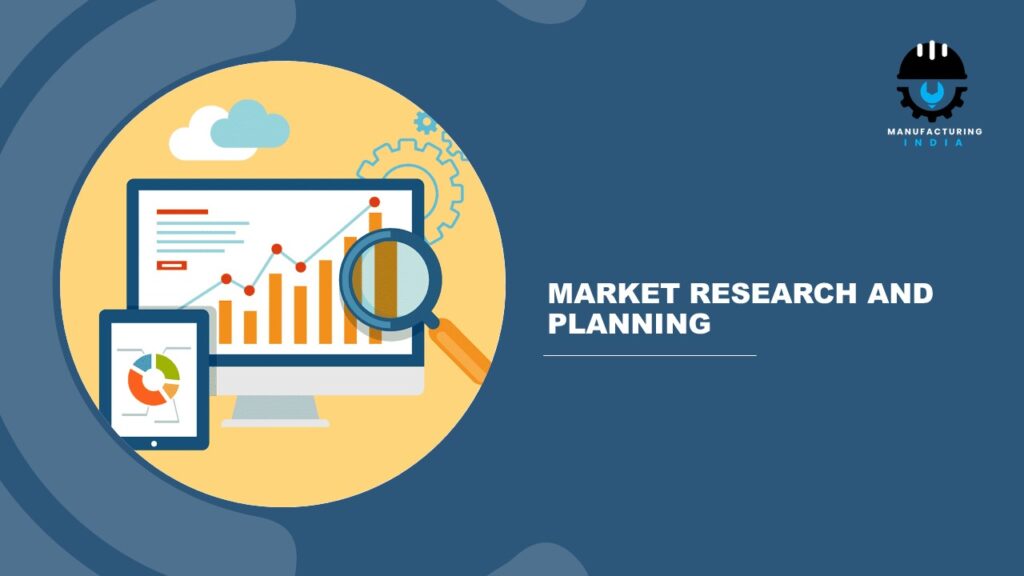
Conducting Feasibility Studies: Conducting feasibility studies is a crucial first step in setting up a manufacturing plant, as it provides a comprehensive analysis of the project’s viability. This process involves assessing various factors such as the availability of raw materials, labour, and utilities; evaluating the potential costs and revenue streams; and understanding the regulatory environment.
Feasibility studies help in identifying potential challenges and risks, ensuring that the business plan is grounded in reality. By examining both the technical and financial aspects, these studies enable entrepreneurs to make informed decisions and lay a solid foundation for their manufacturing venture.
If you are looking for feasibility studies and market entry assessment service, IMARC Group is a trusted provider offering specialized pre-feasibility studies to deliver an early evaluation of project potential. The company is specialized in offering pre-feasibility studies that provide an early assessment of project potential.
Analysing Market Demand and Competition: Analysing market demand and competition is essential to determine the potential success of a manufacturing business. This involves studying current market trends, consumer behaviour, and the demand for specific products.
Understanding the competitive landscape, including the strengths and weaknesses of existing players, helps in identifying opportunities and threats. Detailed market analysis enables businesses to position their products effectively, develop competitive pricing strategies, and identify unique selling propositions that can set them apart in the market.
Identifying Target Customer Segments: Identifying target customer segments is critical for tailoring marketing strategies and product offerings to meet specific needs. This involves segmenting the market based on various criteria such as demographics, geographic locations, psychographics, and purchasing behaviour.
By understanding who the ideal customers are, businesses can create targeted marketing campaigns, design products that meet specific requirements, and build strong customer relationships. Clear identification of target segments ensures that resources are efficiently utilized, and marketing efforts yield the maximum return on investment.
Business Planning
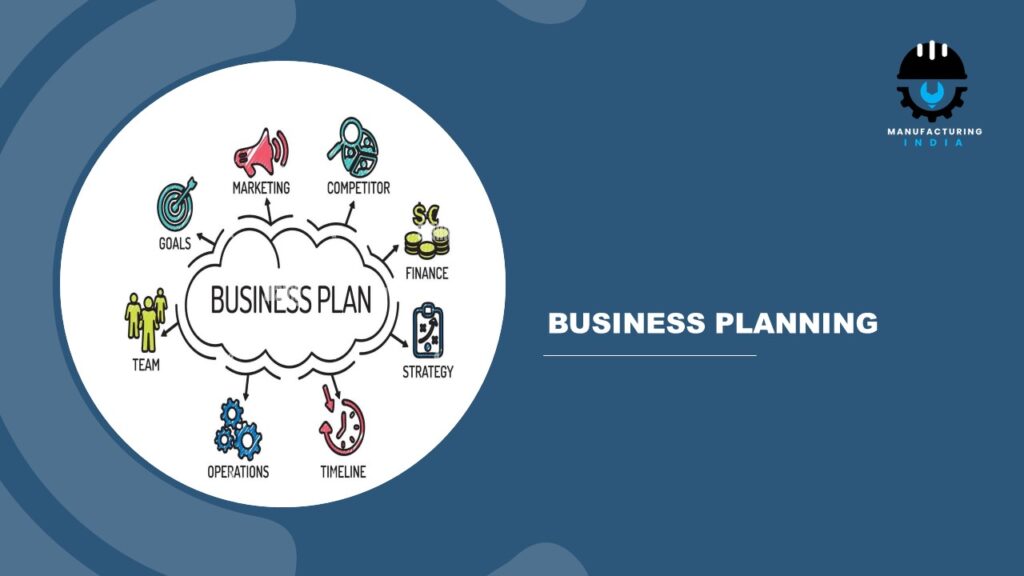
Developing a Detailed Business Plan: Developing a detailed business plan is essential for outlining the roadmap for setting up and running a manufacturing plant. This plan should cover all aspects of the business, including the vision, mission, and objectives, as well as a comprehensive analysis of the market, competitive landscape, and target customers.
It should detail the production process, supply chain logistics, marketing strategies, organizational structure, and operational procedures. A well-crafted business plan not only serves as a blueprint for the business but also acts as a critical tool for securing financing and attracting potential investors by demonstrating the viability and profitability of the venture.
Financial Projections and Funding Requirements: Financial projections and funding requirements are crucial components of a business plan, providing a clear picture of the expected financial performance and capital needs of the manufacturing plant. This involves forecasting revenues, expenses, and profitability over a specified period, typically three to five years.
Accurate financial projections help in identifying the break-even point, cash flow requirements, and potential financial risks. Additionally, outlining the funding requirements, including initial capital investments for infrastructure, equipment, and working capital, is essential for determining how much funding is needed and for what purposes.
Identifying Potential Investors and Financing Options: Identifying potential investors and financing options is a key step in securing the necessary capital to establish and grow the manufacturing plant. This process involves exploring various sources of funding, such as venture capitalists, angel investors, banks, and government grants or subsidies.
Understanding the preferences and criteria of different investors can help tailor pitches and proposals to attract interest and secure commitments. Additionally, considering a mix of financing options, including equity financing, debt financing, and internal accruals, can provide a balanced approach to meeting funding needs while managing financial risks and maintaining control over the business.
Legal and Regulatory Compliance
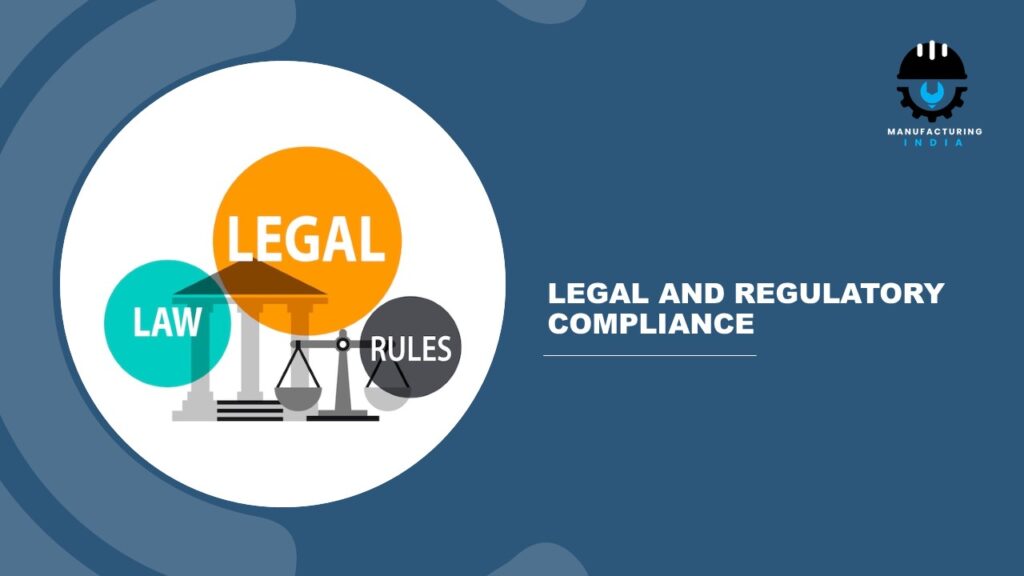
Understanding Indian Business Laws and Regulations: Navigating the complex landscape of Indian business laws and regulations is a critical step in setting up a manufacturing plant. This involves a thorough understanding of various legal requirements, including labour laws, environmental regulations, taxation policies, and industry-specific guidelines.
Compliance with these laws is essential to avoid legal pitfalls and ensure smooth operations. Additionally, staying informed about changes in legislation and regulatory updates is crucial for maintaining compliance and mitigating risks associated with non-compliance. Businesses often engage legal experts or consultants to help interpret and apply these regulations effectively. For instance, IMARC’s expertise in regulatory approvals and licensing helps businesses address compliance challenges comprehensively, guaranteeing alignment with all relevant legal prerequisites.
Company Registration Process (Types of Entities, Documentation): The company registration process in India involves selecting the appropriate type of business entity, such as a sole proprietorship, partnership, limited liability partnership (LLP), private limited company, or public limited company. Each entity type has distinct legal and tax implications.
The registration process requires preparing and submitting various documents, including the Memorandum of Association (MOA), Articles of Association (AOA), and proof of identity and address for directors and shareholders. Additionally, obtaining a Digital Signature Certificate (DSC) and Director Identification Number (DIN) is necessary for online submissions. This process ensures that the business is legally recognized and can operate within the framework of Indian corporate law.
Obtaining Necessary Licenses and Permits (Environmental, Industrial): Securing the necessary licenses and permits is a vital aspect of establishing a manufacturing plant in India. Depending on the industry and the nature of operations, businesses may need to obtain various environmental and industrial permits, such as pollution control certificates, factory licenses, and safety compliance certificates.
Environmental clearances are particularly important for industries that may impact air, water, and land resources. Ensuring compliance with industrial regulations, such as fire safety and labour laws, is also crucial. These permits and licenses not only validate the legal operation of the manufacturing plant but also ensure adherence to health, safety, and environmental standards.
Site Selection

Factors to Consider (Proximity to Raw Materials, Labor Availability, Logistics): Selecting the right site for a manufacturing plant involves considering several critical factors. Proximity to raw materials can significantly reduce transportation costs and ensure a steady supply chain, while access to a skilled and available labour force is essential for efficient operations.
Additionally, logistics and connectivity play a crucial role; the site should be well-connected to major highways, ports, and railways to facilitate easy movement of goods and materials. Other factors include availability of utilities such as water and electricity, land costs, and local regulations. A strategic site selection can enhance operational efficiency, reduce costs, and support long-term business growth.
Evaluating Industrial Zones and Special Economic Zones (SEZs): Industrial zones and Special Economic Zones (SEZs) offer various benefits that can be advantageous for manufacturing businesses. These zones typically provide ready infrastructure, including roads, utilities, and waste management, which can expedite the setup process. SEZs, in particular, offer additional incentives such as tax holidays, duty-free import of raw materials, and easier regulatory procedures.
Evaluating these zones involves assessing the specific benefits offered, the types of industries clustered within the zone, and the overall business environment. Choosing a location within an industrial zone or SEZ can provide significant cost savings and operational advantages.
Conducting Site Visits and Feasibility Assessments: Conducting site visits and feasibility assessments is a crucial step in the site selection process. Site visits allow business owners to physically inspect the location, assess the infrastructure, and understand the local environment and community. Feasibility assessments involve a detailed analysis of the site’s suitability for the proposed manufacturing operations, considering factors such as land topography, environmental impact, and potential challenges.
These assessments help in identifying any potential issues early on and ensure that the selected site meets all operational and regulatory requirements. This thorough evaluation process aids in making an informed decision, reducing the risk of future complications.
Construction and Infrastructure
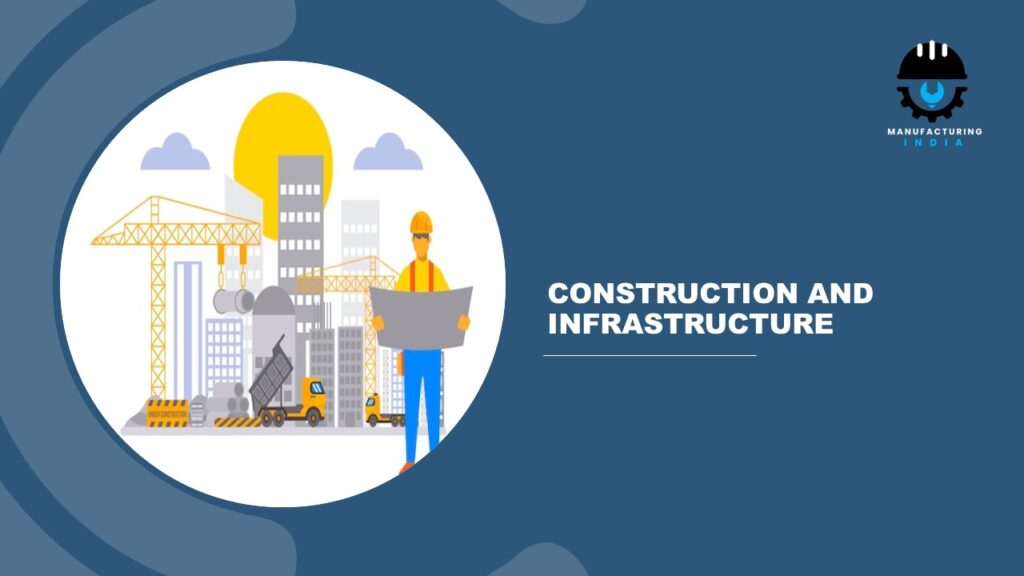
Planning and Designing the Manufacturing Facility: Planning and designing a manufacturing facility is a foundational step that sets the stage for efficient production operations. This process involves creating detailed architectural and engineering plans that outline the layout, workflow, and space utilization of the plant. Considerations include optimizing the production line, ensuring safety protocols, and incorporating future expansion capabilities.
Effective facility design aims to maximize operational efficiency, minimize costs, and enhance the overall productivity of the manufacturing process. Collaboration with industry experts and stakeholders during the planning phase ensures that the facility meets both current and future needs.
Hiring Contractors and Architects: Hiring experienced contractors and architects is essential for translating the facility design into a functional manufacturing plant. Architects bring expertise in designing industrial spaces that meet operational requirements, while contractors manage the construction process, ensuring that the project is completed on time and within budget. Selecting reputable professionals with a proven track record in industrial projects is crucial.
Thoroughly vetting candidates, reviewing portfolios, and checking references can help in making informed decisions. Clear communication and regular coordination with the construction team ensure that the project progresses smoothly and meets all specifications.
Ensuring Compliance with Building Codes and Standards: Compliance with building codes and standards is critical to ensuring the safety, legality, and efficiency of the manufacturing facility. This involves adhering to local, state, and national regulations that govern construction practices, structural integrity, fire safety, and environmental impact.
Regular inspections and audits during the construction process help in identifying and rectifying any deviations from the prescribed standards. Ensuring compliance not only avoids legal issues and fines but also safeguards the health and safety of workers, reduces liability, and promotes a sustainable and secure working environment.
Setting Up Utilities (Electricity, Water, Waste Management): Setting up essential utilities such as electricity, water, and waste management systems is a vital component of establishing a manufacturing facility. Reliable and sufficient electricity supply is necessary to power machinery and equipment, while an adequate water supply supports various production processes and employee needs.
Effective waste management systems ensure that industrial waste is disposed of in an environmentally responsible manner, complying with regulatory requirements. Coordinating with local utility providers, securing necessary permits, and installing efficient systems are crucial steps in ensuring that these utilities are set up correctly and sustainably, enabling smooth and uninterrupted manufacturing operations.
Equipment Procurement

Identifying and Sourcing Machinery and Equipment: Identifying and sourcing the right machinery and equipment is a critical step in setting up a manufacturing plant. This involves conducting thorough research to determine the specific requirements of the production process and identifying the equipment that meets these needs. Factors to consider include the equipment’s capacity, efficiency, reliability, and compatibility with existing systems.
It is essential to evaluate the latest technological advancements to ensure that the selected machinery enhances productivity and maintains a competitive edge. Networking with industry experts, attending trade shows, and consulting with equipment manufacturers can provide valuable insights into the best options available.
Evaluating Suppliers and Negotiating Contracts: Evaluating suppliers and negotiating contracts are crucial for securing high-quality machinery and equipment at competitive prices. This process involves assessing potential suppliers based on their reputation, experience, product quality, after-sales support, and delivery timelines.
Requesting quotations, conducting site visits, and reviewing client testimonials can help in making informed decisions. Once the suppliers are shortlisted, negotiating favourable terms and conditions, including pricing, payment schedules, warranty, and maintenance services, is essential to ensure value for money and long-term reliability. Building strong relationships with reliable suppliers can lead to better deals and ongoing support.
Importing Equipment and Managing Customs Procedures: Importing equipment and managing customs procedures require meticulous planning and adherence to regulatory requirements. This involves coordinating with logistics providers, understanding import regulations, and ensuring all necessary documentation, such as invoices, shipping manifests, and certificates of origin, are in order.
Navigating customs procedures efficiently can minimize delays and additional costs. Working with experienced customs brokers and freight forwarders can streamline the process, ensuring that the imported equipment arrives on time and in good condition. Additionally, understanding and applying for any applicable duty exemptions or incentives can further reduce import costs and enhance the overall feasibility of the project.
Hiring and Training

Workforce Planning and Recruitment Strategies: Workforce planning and recruitment strategies are essential for building a capable and efficient team to operate the manufacturing plant. This involves assessing the specific skills and competencies required for various roles and forecasting future workforce needs based on production targets and business growth.
Effective recruitment strategies include leveraging multiple channels such as job portals, recruitment agencies, and campus placements to attract a diverse pool of candidates. Additionally, implementing rigorous screening processes, including interviews, skill assessments, and background checks, ensures that the best talent is selected. Developing a strong employer brand and offering competitive benefits can also attract and retain skilled workers.
IMARC Group offers recruitment services focused on connecting businesses with top-tier talent to fuel growth and innovation. Being a trusted name in the industry, the firm excels at identifying and recruiting leaders and managers with the necessary experience, connections, and drive to advance your organization’s success.
Complying with Labor Laws and Regulations: Compliance with labour laws and regulations is critical to ensuring the legal and ethical operation of the manufacturing plant. This involves understanding and adhering to national and state-specific labour laws, including those related to minimum wages, working hours, employee benefits, and workplace safety.
Ensuring compliance helps avoid legal penalties and fosters a positive work environment. Regular audits, maintaining accurate employee records, and staying updated on regulatory changes are essential practices. Engaging legal experts or HR consultants can also help navigate the complexities of labour laws and ensure that all practices are in line with legal requirements.
Implementing Training Programs for Employees: Implementing comprehensive training programs for employees is crucial for enhancing their skills and ensuring efficient operations. These programs should cover technical training specific to machinery and processes, as well as soft skills such as teamwork and communication.
Ongoing training helps employees stay updated with the latest industry practices and technological advancements. Tailored training modules, hands-on workshops, and e-learning platforms can cater to different learning preferences and ensure effective knowledge transfer. Investing in employee development not only boosts productivity but also increases job satisfaction and retention rates.
Developing Health and Safety Protocols: Developing robust health and safety protocols is vital for protecting employees and maintaining a safe working environment. This involves identifying potential hazards, conducting risk assessments, and implementing safety measures to prevent accidents and injuries.
Regular safety drills, proper use of personal protective equipment (PPE), and clear signage are essential components of a comprehensive safety plan. Training employees on emergency procedures and first aid can also enhance preparedness. Ensuring compliance with occupational health and safety regulations, conducting regular audits, and continuously improving safety practices can create a culture of safety and well-being within the organization.
Supply Chain Management
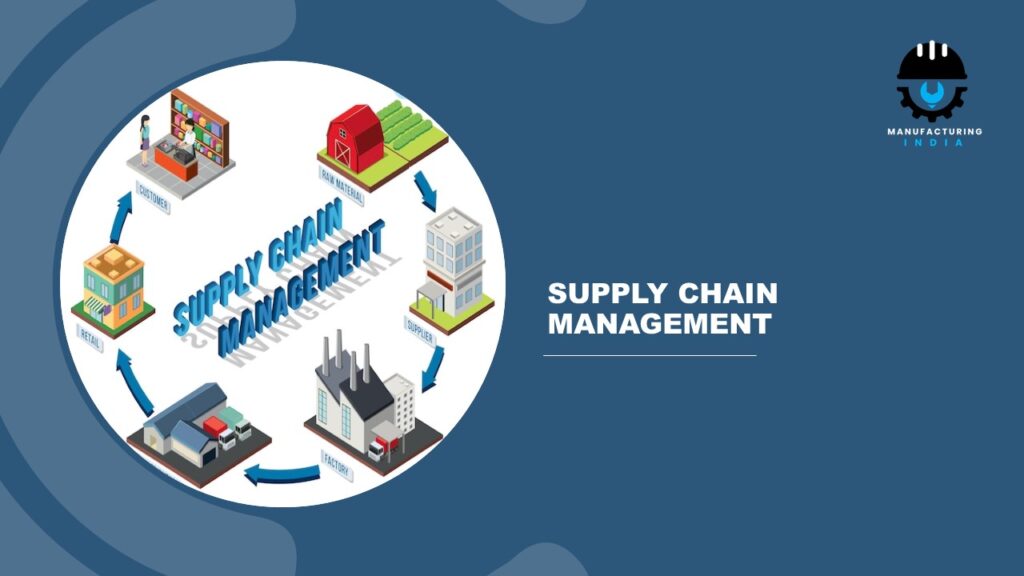
Establishing Relationships with Suppliers and Vendors: Establishing strong relationships with suppliers and vendors is essential for ensuring a reliable and cost-effective supply chain. This involves selecting partners who can consistently provide high-quality raw materials and components at competitive prices.
Building these relationships requires effective communication, clear agreements, and mutual trust. Regular meetings and performance reviews can help in addressing any issues promptly and fostering long-term partnerships. Developing strategic alliances and maintaining a diversified supplier base can also mitigate risks associated with supply disruptions and enhance overall supply chain resilience.
Implementing Efficient Inventory Management Systems: Efficient inventory management systems are crucial for optimizing stock levels, reducing holding costs, and preventing stockouts or overstock situations. This involves adopting advanced technologies such as inventory management software, automated tracking, and real-time data analytics.
These tools help in accurately forecasting demand, managing reorder points, and streamlining inventory processes. Implementing practices like Just-In-Time (JIT) inventory and ABC analysis can further enhance efficiency. By maintaining optimal inventory levels, businesses can improve cash flow, reduce waste, and ensure that production schedules are not disrupted.
Planning Logistics and Transportation Networks: Planning effective logistics and transportation networks is vital for the smooth movement of raw materials and finished goods. This involves designing routes and schedules that minimize transit times and costs while ensuring timely deliveries. Leveraging technology such as GPS tracking and route optimization software can enhance logistics efficiency and visibility.
Collaborating with reliable logistics providers and developing contingency plans for potential disruptions can further ensure seamless operations. Efficient logistics and transportation planning not only reduce operational costs but also enhance customer satisfaction by ensuring the timely delivery of products.
Marketing and Distribution Strategies

Developing a Marketing Strategy and Brand Positioning: Developing a comprehensive marketing strategy and strong brand positioning is crucial for establishing a manufacturing plant’s presence in the market. This involves conducting market research to understand customer needs, preferences, and competitive dynamics.
Based on these insights, businesses can craft a unique value proposition and brand message that resonates with their target audience. The marketing strategy should outline clear goals, target markets, and tactics for reaching potential customers, including advertising, public relations, and promotional activities. Effective brand positioning helps differentiate the company from competitors, build brand loyalty, and drive long-term business success.
IMARC Group offers marketing and sales services that help businesses and entrepreneurs boost their revenue by selling their products more effectively.
Identifying Distribution Channels and Sales Networks: Identifying the right distribution channels and sales networks is essential for ensuring that products reach customers efficiently and effectively. This involves analysing different channel options, such as direct sales, wholesalers, distributors, and retailers, to determine the most suitable ones for the business model. Building strong relationships with channel partners and negotiating favourable terms are key to maximizing reach and profitability.
Additionally, considering factors like geographic coverage, customer reach, and cost implications helps in selecting the optimal mix of distribution channels. A well-structured sales network ensures product availability, enhances market penetration, and drives revenue growth.
Leveraging Digital Marketing and E-Commerce Platforms: Leveraging digital marketing and e-commerce platforms is increasingly important for reaching a wider audience and driving sales in the modern marketplace. Digital marketing strategies, including search engine optimization (SEO), social media marketing, email campaigns, and content marketing, can effectively promote products and engage customers online.
E-commerce platforms offer a convenient and scalable way to sell products directly to consumers, providing detailed analytics and insights into customer behaviour. By integrating digital marketing with e-commerce, businesses can enhance their online presence, improve customer engagement, and boost sales through targeted and data-driven marketing efforts.
Participating in Trade Shows and Industry Events: Participating in trade shows and industry events is a valuable strategy for showcasing products, networking with industry peers, and generating leads. These events provide opportunities to demonstrate product capabilities, gain market insights, and establish relationships with potential customers and partners.
Preparing visually appealing and informative exhibits, engaging presentations, and interactive demonstrations can attract attention and create lasting impressions. Additionally, attending seminars and panel discussions at these events can enhance industry knowledge and stay updated on market trends. Active participation in trade shows and industry events helps build brand recognition, foster business connections, and drive sales growth.
Conclusion
Setting up a manufacturing plant in India involves a series of crucial steps and considerations that require careful planning and execution. From conducting thorough market research and developing a detailed business plan to navigating legal and regulatory compliance, each phase is integral to the successful establishment of the business.
At IMARC Group, we offer factory setup services with thorough planning, extensive knowledge, and strategic implementation. With deep expertise in market research and consulting, we provide invaluable insights into market dynamics, regulatory requirements, and investment opportunities across various sectors.
Our tailored advisory services encompass feasibility studies, site selection, competitive analysis, and strategic planning, ensuring informed decision-making at every stage of the setup process. By leveraging our extensive network and industry knowledge, we assist businesses in navigating complexities, minimizing risks, and optimizing operational efficiency.
Whether it’s navigating local regulations, identifying cost-effective resources, or accessing skilled labour, IMARC Group’s holistic approach facilitates a smooth and successful establishment of manufacturing ventures in India.
To Get the More Details: https://www.imarcgroup.com/contact-us
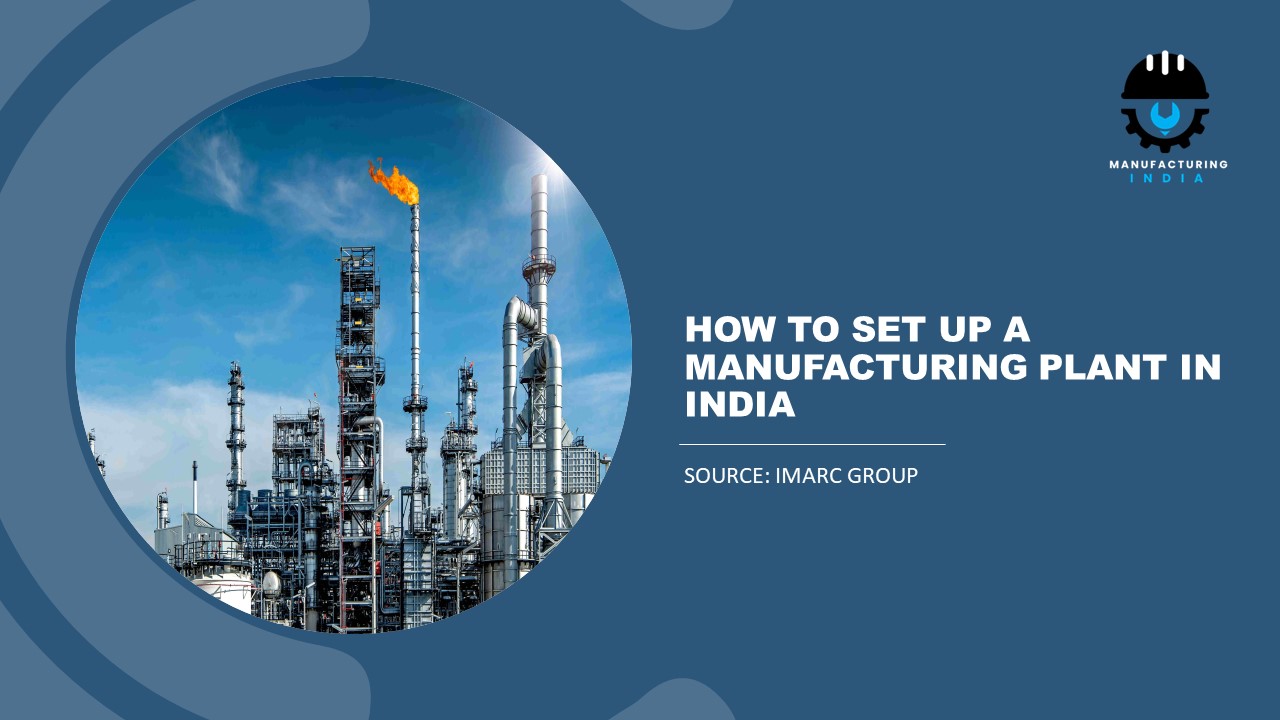
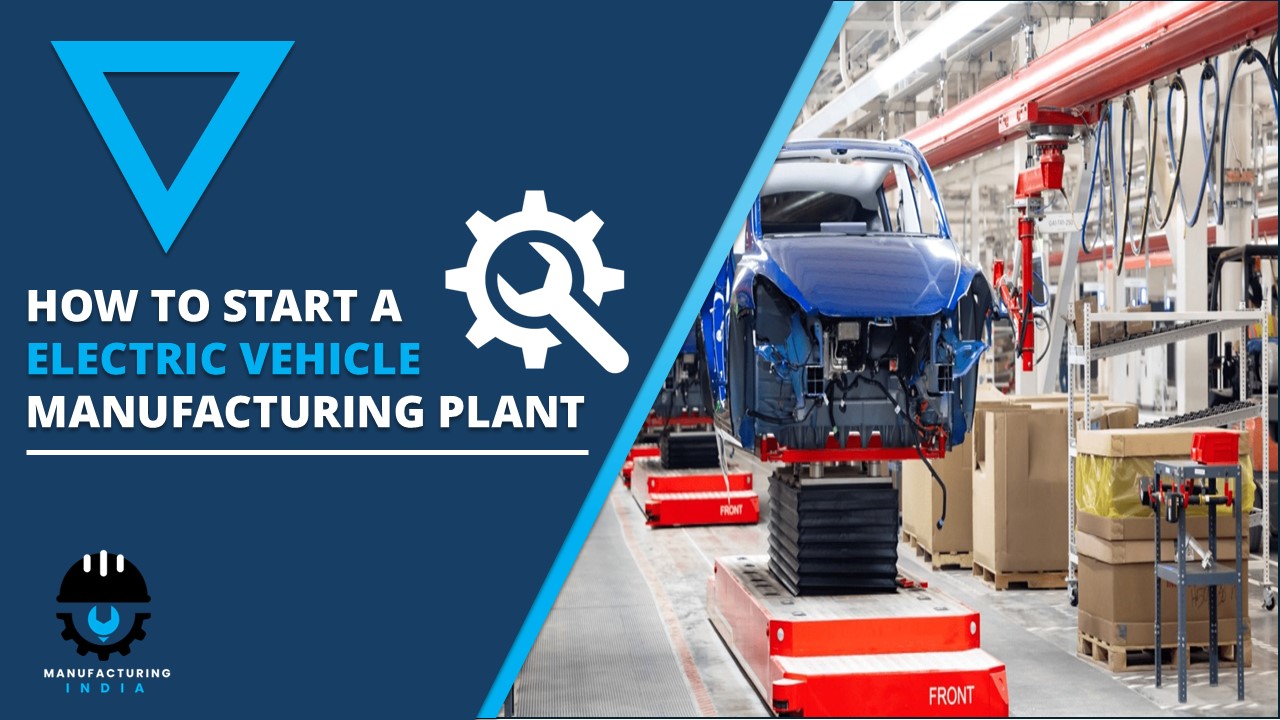
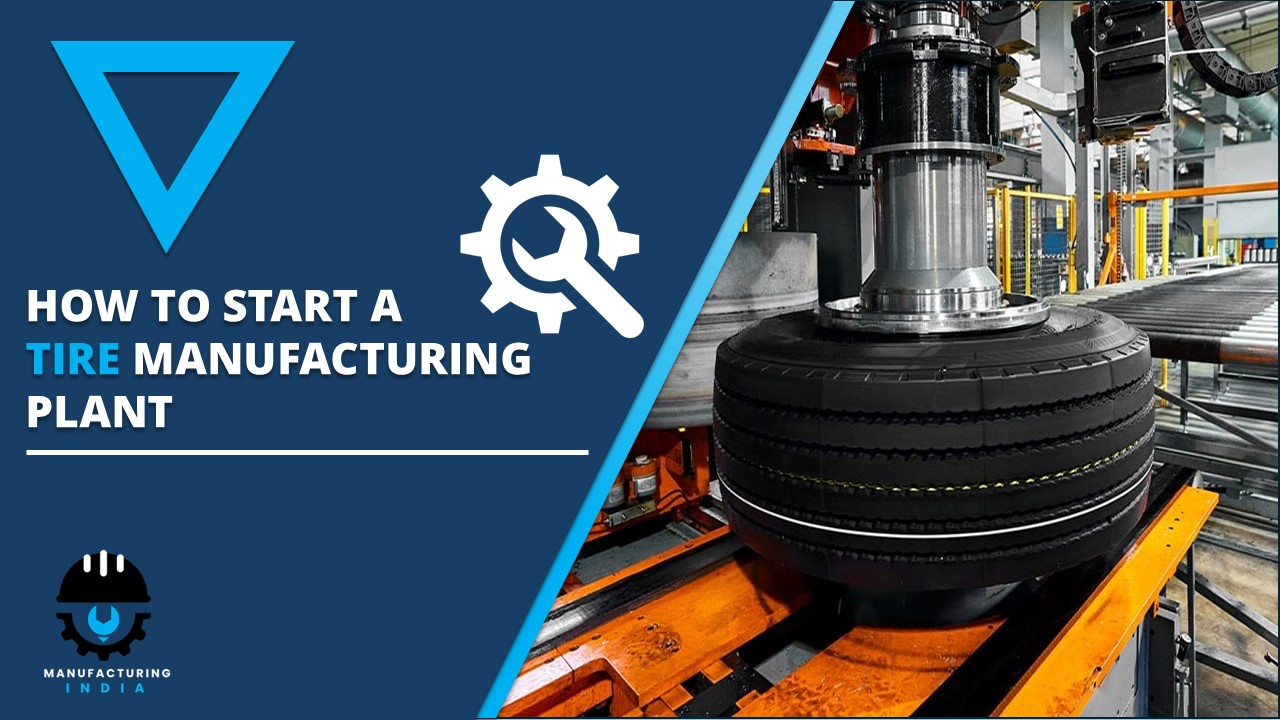

I will right away grasp your rss feed as I
can not in finding your e-mail subscription hyperlink or newsletter service.
Do you’ve any? Please allow me recognize in order that I may
just subscribe. Thanks.